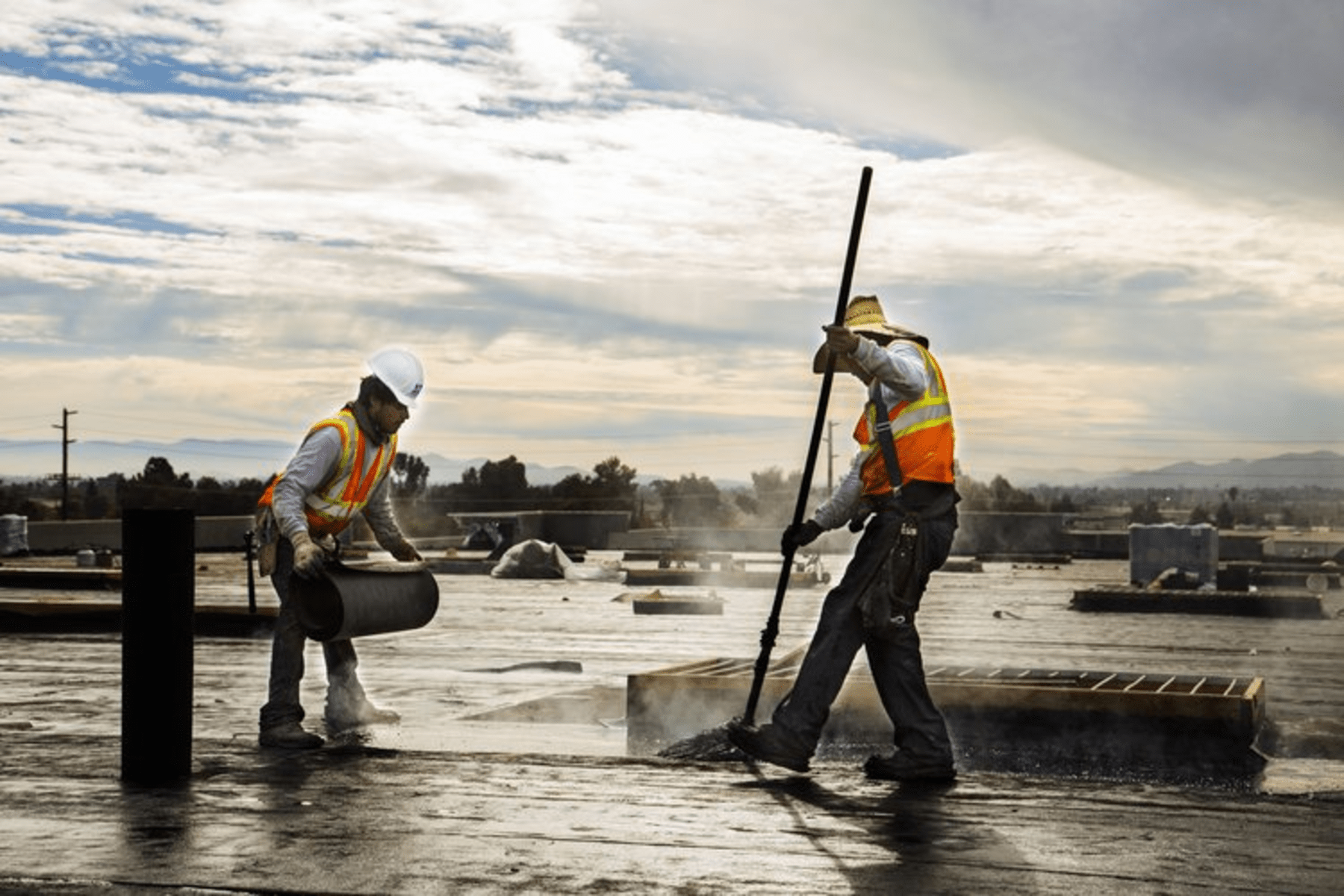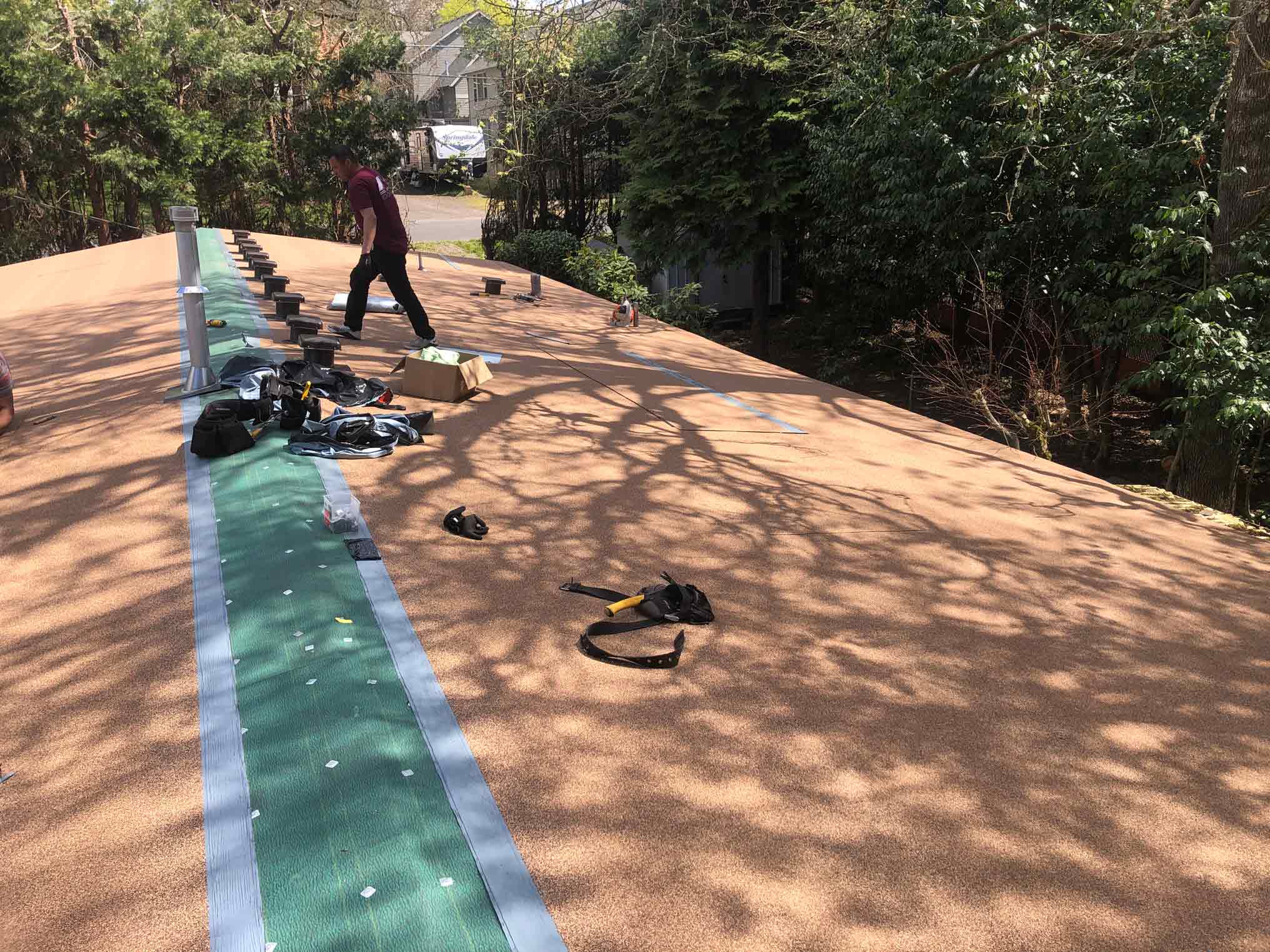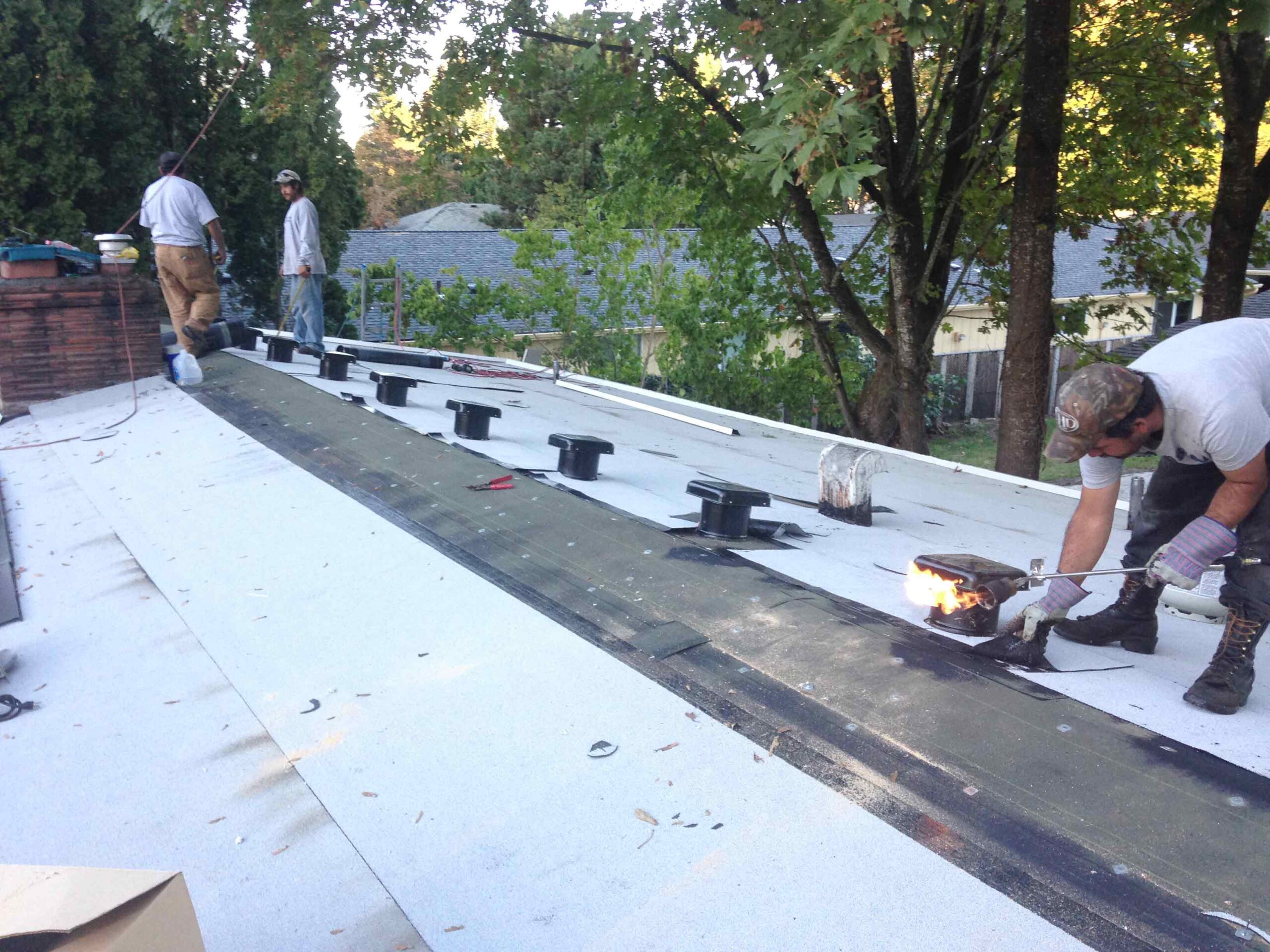Asphalt Based Roofing in Oregon City OR
Asphalt-Based Flat Roofing
As we know, oil repels water. That is the basis of asphalt-based flat roofing. Most asphalt-based flat roofing consists of two or more plies of roofing that are staggered so that joints do not align. The roof is rolled-out and attached or adhered to the substrate. Substrates can be some form of wood or concrete, as well as insulation and specialty boards designed for the application of these products.
Asphalt-based roofing comes in several forms. They are thicker than single-ply roofing, and can be relatively simple to maintain and repair. They have a variety of warranties and lifecycles, from 12 to 30 years.
Asphalt composition shingles are constructed using a fabric mat base that is coated with an asphalt mixture. This layer is then topped with ceramic granules, which not only provide color but also serve as a crucial barrier against UV damage. Variations in manufacturing techniques can influence the roof’s appearance, longevity, and maintenance needs.

Built-Up/Hot Tar Roofing
These roofs are often surfaced with aggregate (stone) or a granulated cap sheet for UV resistance and longevity. They can also be surfaced with a reflective coating to preserve their life.
Built-up roofs are “monolithic,” meaning the installation process eliminates seams from the roof system. Having no seams means less failure points. These roofs typically fail at the edges or penetrations.
Although Built-up roofs typically have long life spans, they are not as reliable as they once were. High insurance premiums, lower reliability of modern asphalt products, and nasty smells during installation have made them costly and often less desirable. A lessening number of workers are happy with the minor burns and messy work environment the hot, sticky tar provides. Therefore, fewer companies are willing to provide this roofing service. Still, it remains one of the better products, if installed correctly.

S.B.S. Self-Adhered Modified Asphalt Roofing (Styrene-Butadiene-Styrene)
S.B.S. is a great northern climate product. It can handle a broad variety of temperatures, and has a rubber in it that allows for expansion and contraction. It is relatively thick, has a granulated surface, and comes in a variety of different colors. These roofs will last between 18 and 30 years, and sometimes more.

